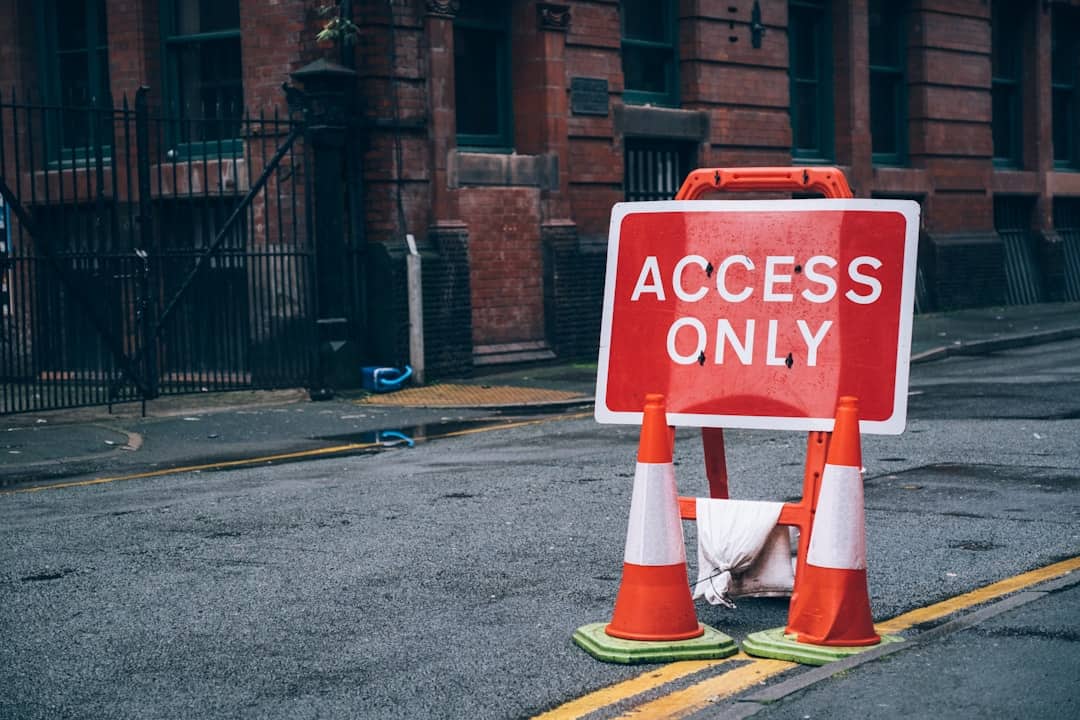Zero Trust Network Access (ZTNA) is a cybersecurity approach that challenges the traditional security model of trusting everything within a network perimeter. Instead, ZTNA operates on the principle of “never trust, always verify,” requiring continuous authentication and authorization for all users and devices, regardless of their location or network status. ZTNA employs various technologies to ensure secure access to resources, including:
1.
Identity and Access Management (IAM)
2. Multi-Factor Authentication (MFA)
3. Encryption
4.
Micro-segmentation
These technologies work together to verify the identity and security posture of users and devices before granting access to specific applications and resources. The adoption of ZTNA has been driven by several factors:
1. Increasing cyber threats
2.
Rise of remote work
3. Need for more granular access control
4. Limitations of traditional perimeter-based security models
By implementing ZTNA, organizations can:
1.
Reduce the risk of unauthorized access
2. Prevent data breaches
3. Limit lateral movement within networks
4.
Adapt to evolving threat landscapes
5. Protect critical assets more effectively
ZTNA is particularly relevant in today’s business environment, where employees, contractors, and partners require access to corporate resources from various locations and devices. This approach provides a more dynamic and flexible security framework that can accommodate modern work practices while maintaining a strong security posture.
Key Takeaways
- Zero Trust Network Access (ZTNA) is a security model that eliminates the idea of trust based on location or network, and instead requires strict identity verification for every person and device trying to access resources.
- Implementing Palo Alto ZTNA involves using their Prisma Access solution, which provides secure access to applications and data, regardless of location.
- The benefits of ZTNA include improved security posture, reduced attack surface, and better visibility and control over network access.
- ZTNA can secure remote access by ensuring that users and devices are authenticated and authorized before accessing resources, regardless of their location.
- ZTNA can also be used for cloud security, ensuring that only authorized users and devices can access cloud resources, and providing visibility and control over cloud access.
- When it comes to mobile device security, ZTNA can ensure that only trusted devices can access resources, and can provide secure access to applications and data on mobile devices.
- Best practices for utilizing Palo Alto ZTNA include implementing strong authentication methods, regularly reviewing and updating access policies, and continuously monitoring and analyzing network access.
Implementing Palo Alto Zero Trust Network Access
Palo Alto Networks offers a comprehensive Zero Trust Network Access solution that helps organizations secure their networks and applications while enabling secure access for authorized users. Palo Alto’s ZTNA solution provides a unified platform for secure access control, threat prevention, and visibility across all network environments. The implementation of Palo Alto ZTNA involves several key components, including the GlobalProtect cloud service, Prisma Access, and the Next-Generation Firewall.
The GlobalProtect cloud service provides secure access to both on-premises and cloud-based applications for remote users. It ensures that users can securely connect to the corporate network without compromising security. Prisma Access extends the security of the Palo Alto Next-Generation Firewall to all users, regardless of their location.
It provides consistent security policies and threat prevention capabilities across the entire network. The Next-Generation Firewall offers advanced security features such as application-based control, intrusion prevention, and URL filtering to protect against known and unknown threats. By implementing Palo Alto ZTNA, organizations can achieve a zero-trust security model that protects their networks from unauthorized access and cyber threats.
The solution enables organizations to enforce granular access controls based on user identity, device posture, and application sensitivity. Additionally, Palo Alto ZTNA provides comprehensive visibility into network traffic and user behavior, allowing organizations to detect and respond to security incidents more effectively.
Benefits of Zero Trust Network Access

The adoption of Zero Trust Network Access offers several key benefits for organizations looking to enhance their cybersecurity posture. Firstly, ZTNA reduces the risk of unauthorized access to critical resources by implementing strict access controls based on user identity and device posture. This helps prevent data breaches and insider threats by ensuring that only authorized users can access sensitive information.
Secondly, ZTNA improves visibility into network traffic and user behavior, allowing organizations to detect and respond to security incidents more effectively. By monitoring user activity and enforcing access policies in real-time, organizations can identify potential threats and take proactive measures to mitigate them. Furthermore, ZTNA enables organizations to support remote work and bring your own device (BYOD) initiatives without compromising security.
With ZTNA, employees can securely access corporate resources from any location and device, ensuring productivity while maintaining a strong security posture. Overall, Zero Trust Network Access provides a more dynamic and adaptive approach to network security, allowing organizations to protect their critical assets from evolving cyber threats effectively.
Securing Remote Access with Zero Trust Network Access
| Metrics | Value |
|---|---|
| Number of remote access requests | 1000 |
| Number of successful remote access connections | 950 |
| Number of denied remote access connections | 50 |
| Number of unauthorized access attempts | 10 |
| Number of security incidents detected | 5 |
Securing remote access has become a top priority for organizations as the workforce becomes increasingly distributed. Zero Trust Network Access offers a robust solution for securing remote access by implementing strict access controls based on user identity and device posture. With ZTNA, remote users are required to authenticate themselves using multi-factor authentication (MFA) before accessing corporate resources.
This ensures that only authorized users can connect to the network, reducing the risk of unauthorized access and data breaches. Additionally, ZTNA enforces granular access controls based on user roles and responsibilities, ensuring that users only have access to the resources necessary for their job functions. This helps prevent lateral movement within the network and reduces the impact of potential security incidents.
By implementing Zero Trust Network Access for remote access, organizations can support flexible work arrangements while maintaining a strong security posture. Employees can securely connect to corporate resources from any location without compromising sensitive data or systems.
Zero Trust Network Access for Cloud Security
Cloud security has become a major concern for organizations as they increasingly rely on cloud-based applications and infrastructure. Zero Trust Network Access provides a comprehensive solution for securing cloud environments by enforcing strict access controls and visibility into user activity. With ZTNA, organizations can ensure that only authorized users can access cloud-based applications and data by implementing identity-based access controls and multi-factor authentication.
This helps prevent unauthorized access and data breaches in cloud environments. Furthermore, ZTNA enables organizations to monitor user activity in real-time and enforce security policies based on user behavior. This allows organizations to detect potential threats in cloud environments and take proactive measures to mitigate them.
By implementing Zero Trust Network Access for cloud security, organizations can protect their sensitive data and applications from unauthorized access and cyber threats effectively. ZTNA provides a dynamic and adaptive approach to cloud security, allowing organizations to adapt to the evolving threat landscape while maintaining a strong security posture.
Zero Trust Network Access for Mobile Device Security

Mobile devices have become an integral part of the modern workplace, allowing employees to stay connected and productive from anywhere. However, mobile devices also pose significant security risks if not properly managed. Zero Trust Network Access offers a robust solution for securing mobile device access by implementing strict access controls based on device posture and user identity.
With ZTNA, organizations can enforce device compliance checks before granting access to corporate resources from mobile devices. This ensures that only secure and compliant devices can connect to the network, reducing the risk of mobile-related security incidents. Additionally, ZTNA enables organizations to implement granular access controls based on user roles and responsibilities, ensuring that mobile users only have access to the resources necessary for their job functions.
This helps prevent unauthorized access and data breaches from mobile devices. By implementing Zero Trust Network Access for mobile device security, organizations can support mobile work initiatives while maintaining a strong security posture. Employees can securely access corporate resources from their mobile devices without compromising sensitive data or systems.
Best Practices for Utilizing Palo Alto Zero Trust Network Access
When implementing Palo Alto Zero Trust Network Access, there are several best practices that organizations should follow to maximize the effectiveness of the solution. Firstly, organizations should conduct a thorough assessment of their network environment to identify critical assets and potential security risks. This will help determine the appropriate access controls and security policies needed to protect sensitive data and systems effectively.
Secondly, organizations should implement multi-factor authentication (MFA) for all users accessing corporate resources through ZTNMFA adds an extra layer of security by requiring users to provide multiple forms of verification before accessing the network, reducing the risk of unauthorized access. Furthermore, organizations should regularly monitor user activity and network traffic to detect potential security incidents in real-time. By analyzing user behavior and enforcing security policies based on user activity, organizations can identify potential threats and take proactive measures to mitigate them effectively.
Overall, by following these best practices, organizations can maximize the effectiveness of Palo Alto Zero Trust Network Access in protecting their networks from unauthorized access and cyber threats effectively.
If you’re interested in learning more about the regulatory landscape of the metaverse industry, check out this article on challenges and opportunities in the regulatory landscape. It provides valuable insights into the current and future regulatory environment for metaverse platforms and ecosystems, which is crucial for understanding the implications of implementing technologies like Palo Alto Zero Trust Network Access in this rapidly evolving industry.
FAQs
What is Palo Alto Zero Trust Network Access?
Palo Alto Zero Trust Network Access is a security model that eliminates the concept of trust based on network location within an organization. It ensures that only authorized users and devices have access to specific applications and data, regardless of their location.
How does Palo Alto Zero Trust Network Access work?
Palo Alto Zero Trust Network Access uses a combination of user and device authentication, as well as continuous monitoring and access controls, to verify the identity and security posture of users and devices before granting access to applications and data.
What are the benefits of using Palo Alto Zero Trust Network Access?
Some of the benefits of using Palo Alto Zero Trust Network Access include improved security posture, reduced risk of data breaches, better visibility and control over network access, and the ability to support remote and mobile users without compromising security.
Is Palo Alto Zero Trust Network Access suitable for all types of organizations?
Palo Alto Zero Trust Network Access can be implemented by organizations of all sizes and across various industries. It is particularly beneficial for organizations that prioritize security and need to support remote and mobile users, as well as third-party access to their applications and data.
What are some key features of Palo Alto Zero Trust Network Access?
Key features of Palo Alto Zero Trust Network Access include multi-factor authentication, continuous monitoring and risk assessment, granular access controls, integration with existing security infrastructure, and support for both on-premises and cloud-based applications.











Leave a Reply